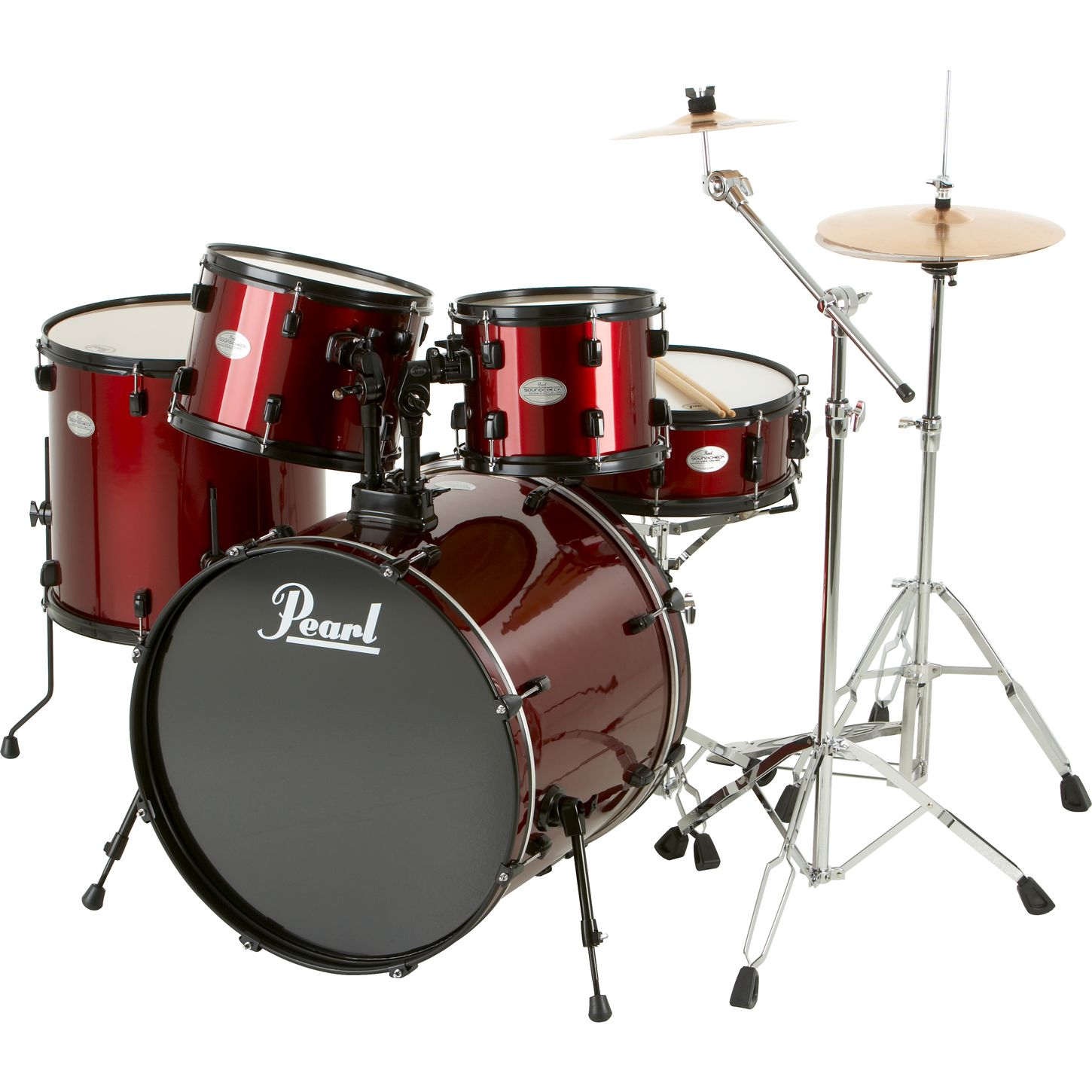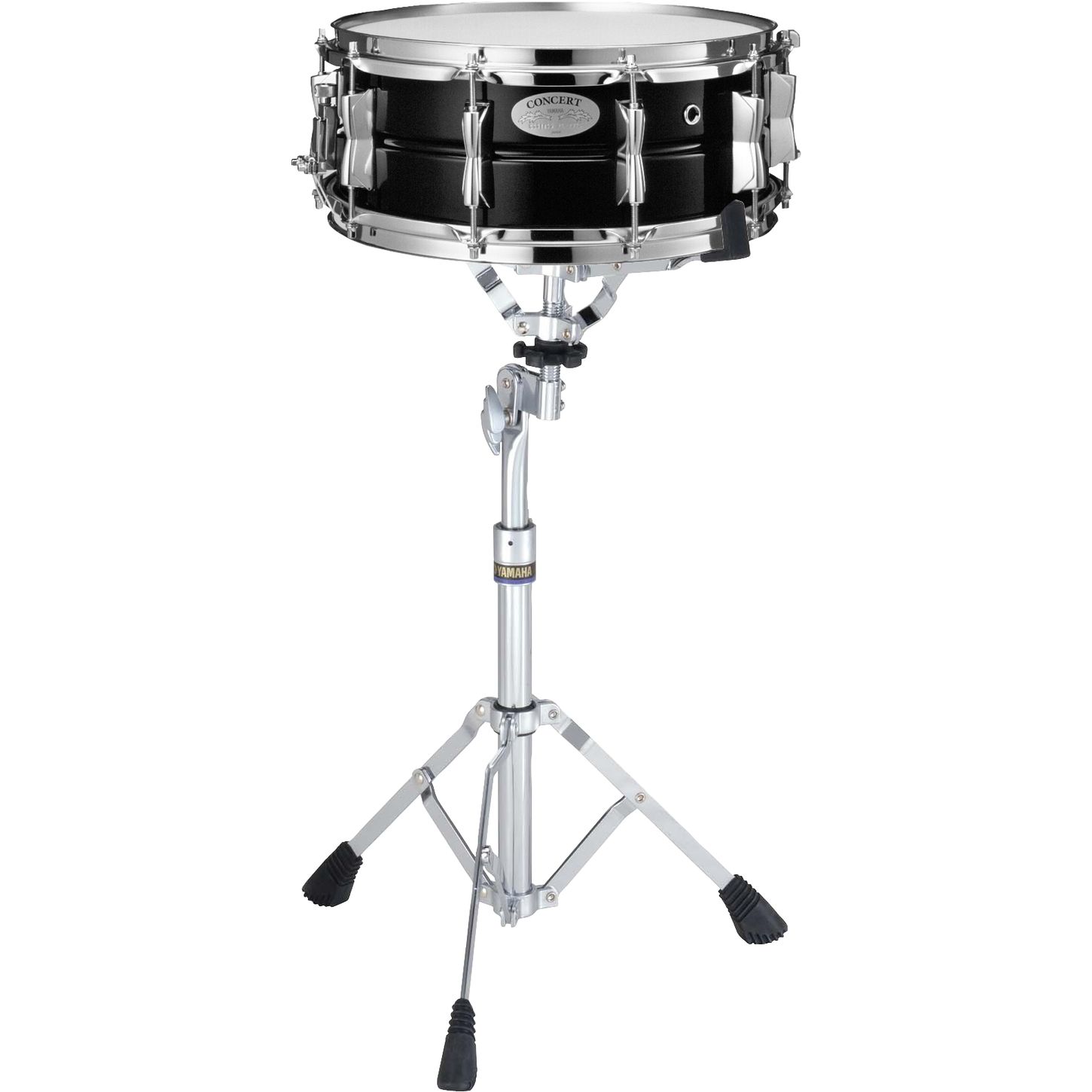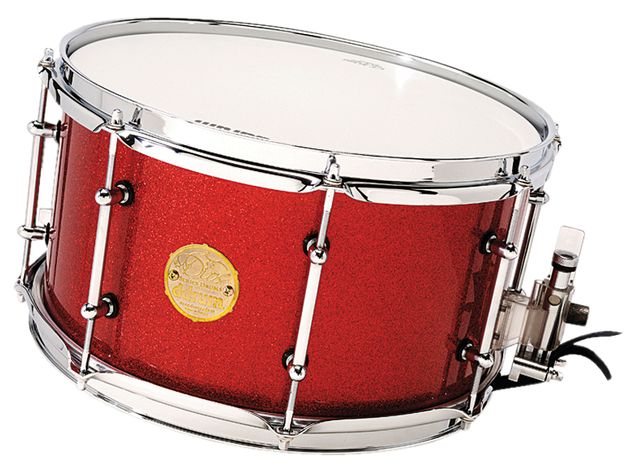 The drum is a known member of the percussion band of musical equipment. Within the Hornbostel-Sachs classification system, this is a membranophone.[1] Drums consist of at least one membrane, called a drumhead or drum epidermis, that is extended more than a shell and struck, either straight with the player's hands, or with a drum stick, to produce audio. There is generally a resonance at once the lower of the drum, tuned to a just a little lower pitch than the top drumhead typically. Other techniques have been used to cause drums to make sound, including the thumb roll. Drums will be the world's oldest & most ubiquitous musical tools, and the basic design has remained unchanged for thousands of years virtually.[1]Drums may independently be performed, with the gamer using a solo drum, and some drums including the djembe are almost played in this way always. Others are played in a couple of several normally, all played by the main one player, such as bongo drums and timpani. A number of different drums with cymbals form the basic modern drum set collectively.
The drum is a known member of the percussion band of musical equipment. Within the Hornbostel-Sachs classification system, this is a membranophone.[1] Drums consist of at least one membrane, called a drumhead or drum epidermis, that is extended more than a shell and struck, either straight with the player's hands, or with a drum stick, to produce audio. There is generally a resonance at once the lower of the drum, tuned to a just a little lower pitch than the top drumhead typically. Other techniques have been used to cause drums to make sound, including the thumb roll. Drums will be the world's oldest & most ubiquitous musical tools, and the basic design has remained unchanged for thousands of years virtually.[1]Drums may independently be performed, with the gamer using a solo drum, and some drums including the djembe are almost played in this way always. Others are played in a couple of several normally, all played by the main one player, such as bongo drums and timpani. A number of different drums with cymbals form the basic modern drum set collectively.Pearl Soundcheck 5Piece Drum Set with Zildjian Cymbals Musician39;s
 Drums are played out by impressive with the side usually, or with one or two sticks. In many traditional cultures, drums have a symbolic function and are being used in religious ceremonies. Drums are being used in music therapy often, especially hand drums, because of their tactile aspect and easy use by a wide variety of people.[2]In popular music and jazz, "drums" usually identifies a drum equipment or a couple of drums (with some cymbals), and "drummer" to the individual who plays them.Drums acquired divine position in places such as Burundi even, where the karyenda was a symbol of the recharged electric power of the ruler.Construction[edit]Drum transported by John Unger, Company B, 40th Regiment NY Veteran Volunteer Infantry Mozart Regiment, 20 december, 1863The shell almost has a circular starting over that your drumhead is extended invariably, but the condition of the remainder of the shell varies widely. Within the western musical traditions, the most standard shape is a cylinder, although timpani, for example, use bowl-shaped shells.[1] Other patterns include a body design (tar, Bodhr?n), truncated cones (bongo drums, Ashiko), goblet formed (djembe), and became a member of truncated cones (communicating drum).Drums with cylindrical shells can most probably at one end (as is the case with timbales), or can have two drum mind. Single-headed drums typically contain a epidermis extended over a specific space, or higher one of the ends of a hollow vessel. Drums with two mind covering both ends of any cylindrical shell frequently have a small opening somewhat halfway between your two heads; the shell varieties a resonating chamber for the producing sound. Exceptions are the African slit drum, also called a log drum as it is made from a hollowed-out tree trunk, and the Caribbean steel drum, created from a material barrel. Drums with two mind can have a couple of cables also, called snares, placed across the bottom level head, top brain, or both heads, hence the name snare drum.[1]
Drums are played out by impressive with the side usually, or with one or two sticks. In many traditional cultures, drums have a symbolic function and are being used in religious ceremonies. Drums are being used in music therapy often, especially hand drums, because of their tactile aspect and easy use by a wide variety of people.[2]In popular music and jazz, "drums" usually identifies a drum equipment or a couple of drums (with some cymbals), and "drummer" to the individual who plays them.Drums acquired divine position in places such as Burundi even, where the karyenda was a symbol of the recharged electric power of the ruler.Construction[edit]Drum transported by John Unger, Company B, 40th Regiment NY Veteran Volunteer Infantry Mozart Regiment, 20 december, 1863The shell almost has a circular starting over that your drumhead is extended invariably, but the condition of the remainder of the shell varies widely. Within the western musical traditions, the most standard shape is a cylinder, although timpani, for example, use bowl-shaped shells.[1] Other patterns include a body design (tar, Bodhr?n), truncated cones (bongo drums, Ashiko), goblet formed (djembe), and became a member of truncated cones (communicating drum).Drums with cylindrical shells can most probably at one end (as is the case with timbales), or can have two drum mind. Single-headed drums typically contain a epidermis extended over a specific space, or higher one of the ends of a hollow vessel. Drums with two mind covering both ends of any cylindrical shell frequently have a small opening somewhat halfway between your two heads; the shell varieties a resonating chamber for the producing sound. Exceptions are the African slit drum, also called a log drum as it is made from a hollowed-out tree trunk, and the Caribbean steel drum, created from a material barrel. Drums with two mind can have a couple of cables also, called snares, placed across the bottom level head, top brain, or both heads, hence the name snare drum.[1]Snare Drum Capitol Music Ensembles
 On modern music group and orchestral drums, the drumhead is located over the opening of the drum, which is kept onto the shell by the "counterhoop" (or "rim"), which is then presented through a number of tuning screws called "tension rods" that screw into lugs located evenly surrounding the circumference. The head's stress can be changed by loosening or tightening the rods. Many such drums have six to ten tension rods. The sound of any drum depends on many variables--including condition, shell thickness and size, shell materials, counterhoop materials, drumhead materials, drumhead tension, drum position, location, and dazzling velocity and angle.[1]
On modern music group and orchestral drums, the drumhead is located over the opening of the drum, which is kept onto the shell by the "counterhoop" (or "rim"), which is then presented through a number of tuning screws called "tension rods" that screw into lugs located evenly surrounding the circumference. The head's stress can be changed by loosening or tightening the rods. Many such drums have six to ten tension rods. The sound of any drum depends on many variables--including condition, shell thickness and size, shell materials, counterhoop materials, drumhead materials, drumhead tension, drum position, location, and dazzling velocity and angle.[1]The 13quot;x7quot; snare drum is fitted with the highly regarded Nickel
 Before the technology of pressure rods, drum skins were attached and tuned by rope systems--as on the Djembe--or pegs and ropes such as on Ewe Drums. Today these procedures are seldom used, though sometimes seem on regimental marching band snare drums.[1] The head of a talking drum, for example, can be temporarily tightened by squeezing the ropes that connect the bottom and top heads. Similarly, the tabla is tuned by hammering a disc held set up round the drum by ropes stretching from the very best to bottom head. Orchestral timpani can be tuned to precise pitches by by using a foot pedal quickly.Sound of a drum[edit]Several North american Indian-style drums for sale at the National Museum of the American Indian.Several factors determine the audio a drum produces, including the type, shape and construction of the drum shell, the type of drum heads it includes, and the strain of the drumheads. Different drum may seem have different uses in music. Take, for example, the present day Tom-tom drum. A jazz drummer might want drums that are high pitched, resonant and calm whereas a rock drummer might prefer drums that are loud, dry and low-pitched. Since these drummers want different sounds, their drums are constructed a little differently.The drum brain gets the most effect how a drum sounds. Each type of drum brain serves its own musical purpose and has its unique sound. Double-ply drumheads dampen high rate of recurrence harmonics because they are heavier and they're suited to heavy performing.[3] Drum mind with a white, textured layer with them muffle the overtones of the drum brain slightly, producing a less diverse pitch. Drum mind with central sterling silver or dark dots tend to muffle the overtones even more. And drum mind with perimeter sound rings mostly eliminate overtones (Howie 2005). Some jazz drummers avoid using thick drum minds, preferring single ply drum minds or drum minds with no muffling
Before the technology of pressure rods, drum skins were attached and tuned by rope systems--as on the Djembe--or pegs and ropes such as on Ewe Drums. Today these procedures are seldom used, though sometimes seem on regimental marching band snare drums.[1] The head of a talking drum, for example, can be temporarily tightened by squeezing the ropes that connect the bottom and top heads. Similarly, the tabla is tuned by hammering a disc held set up round the drum by ropes stretching from the very best to bottom head. Orchestral timpani can be tuned to precise pitches by by using a foot pedal quickly.Sound of a drum[edit]Several North american Indian-style drums for sale at the National Museum of the American Indian.Several factors determine the audio a drum produces, including the type, shape and construction of the drum shell, the type of drum heads it includes, and the strain of the drumheads. Different drum may seem have different uses in music. Take, for example, the present day Tom-tom drum. A jazz drummer might want drums that are high pitched, resonant and calm whereas a rock drummer might prefer drums that are loud, dry and low-pitched. Since these drummers want different sounds, their drums are constructed a little differently.The drum brain gets the most effect how a drum sounds. Each type of drum brain serves its own musical purpose and has its unique sound. Double-ply drumheads dampen high rate of recurrence harmonics because they are heavier and they're suited to heavy performing.[3] Drum mind with a white, textured layer with them muffle the overtones of the drum brain slightly, producing a less diverse pitch. Drum mind with central sterling silver or dark dots tend to muffle the overtones even more. And drum mind with perimeter sound rings mostly eliminate overtones (Howie 2005). Some jazz drummers avoid using thick drum minds, preferring single ply drum minds or drum minds with no mufflingPearl Soundcheck 5Piece Drum Set with Zildjian Cymbals Musician39;s
 The second biggest factor that influences drum audio is head tension resistant to the shell. When the hoop is located around the drum shell and head and tightened down with tension rods, the tension of the top can be fine-tuned. When the tension is increased, the amplitude of the sound is reduced and the regularity is increased, making the pitch higher and the quantity lower.
The second biggest factor that influences drum audio is head tension resistant to the shell. When the hoop is located around the drum shell and head and tightened down with tension rods, the tension of the top can be fine-tuned. When the tension is increased, the amplitude of the sound is reduced and the regularity is increased, making the pitch higher and the quantity lower.
{ 0 comments... Views All / Send Comment! }
Post a Comment